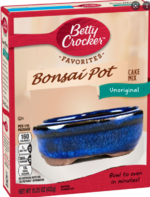HorseloverFat
Squarepants with Conkers
So in @Colorado 's ceramic thread, I was speaking of initiating a Clay Body/Brand discussion.
I feel it will serve as a neat tool to help folks find the best clays for their current needs/uses/methodology.
So.... What clay bodies do YOU normally use? ...perhaps, why?
What Clay Bodies/Brands have you tried out in the past?
What did you enjoy/dislike about them? ...and, perhaps, why?
What kind of clay bodies are you looking for, that others have lacked?
What do you LIKE in a Clay Body? ...and, perhaps, why?
...y'know?
That kind of discussion!
I think it'll be the Eels Ankles.

I have to cook dinner and do Spanish lessons with the boys, so I'll be on here later to break down my specific observations...
But in the meantime, just gonna call a few potter friends here who I KNOW love to talk clay, AND won't consider me "annoying" for summoning them.
@sorce @penumbra @Pitoon @mwar15 @vancehanna @ABCarve @Sputnik 184 @JeffS73 ...just a handful... I even had more qued up, but stopped at 8... Well 9.. cause I called TJ, first, technically.
I feel it will serve as a neat tool to help folks find the best clays for their current needs/uses/methodology.
So.... What clay bodies do YOU normally use? ...perhaps, why?
What Clay Bodies/Brands have you tried out in the past?
What did you enjoy/dislike about them? ...and, perhaps, why?
What kind of clay bodies are you looking for, that others have lacked?
What do you LIKE in a Clay Body? ...and, perhaps, why?
...y'know?
That kind of discussion!
I think it'll be the Eels Ankles.
I have to cook dinner and do Spanish lessons with the boys, so I'll be on here later to break down my specific observations...
But in the meantime, just gonna call a few potter friends here who I KNOW love to talk clay, AND won't consider me "annoying" for summoning them.
@sorce @penumbra @Pitoon @mwar15 @vancehanna @ABCarve @Sputnik 184 @JeffS73 ...just a handful... I even had more qued up, but stopped at 8... Well 9.. cause I called TJ, first, technically.










